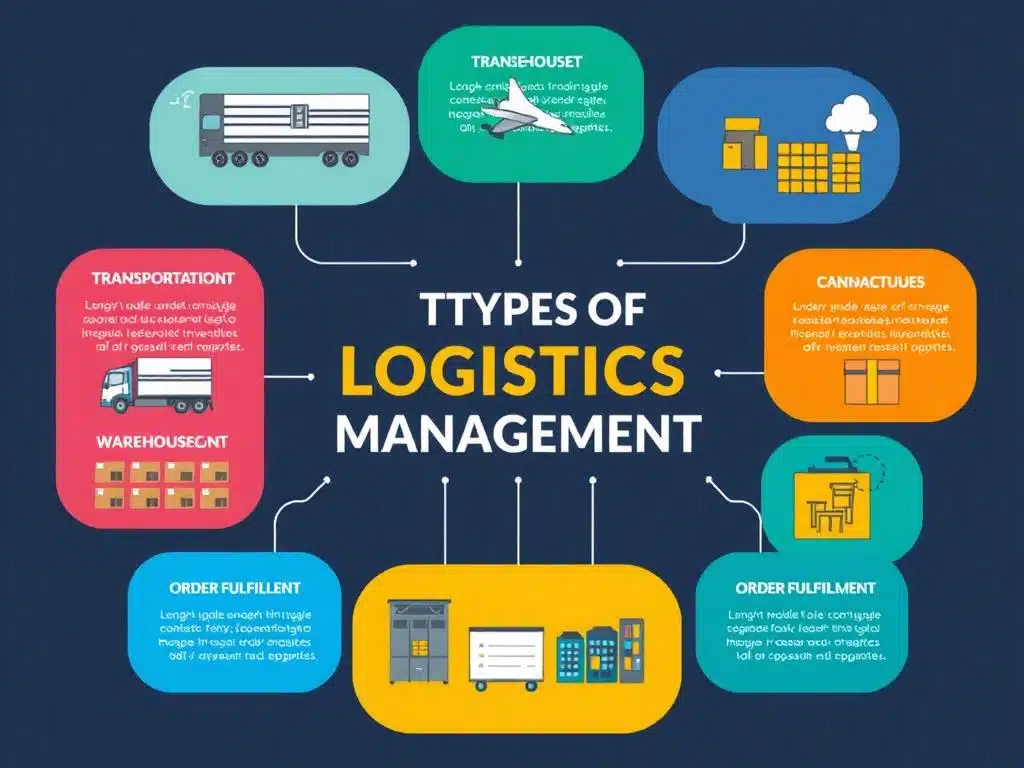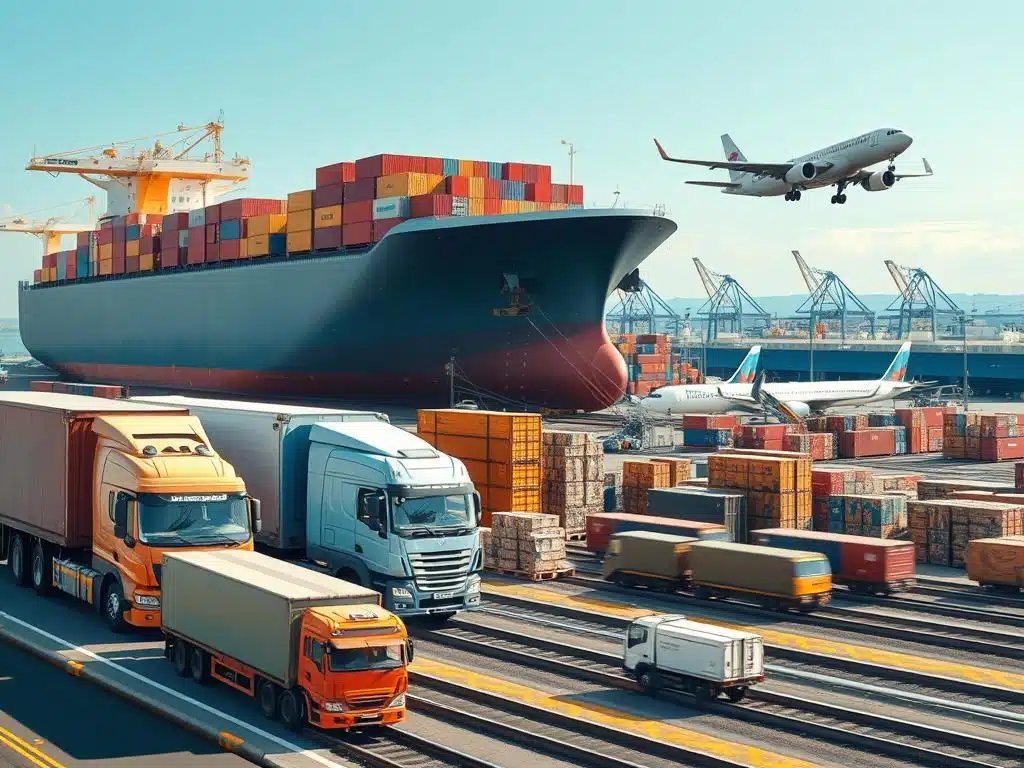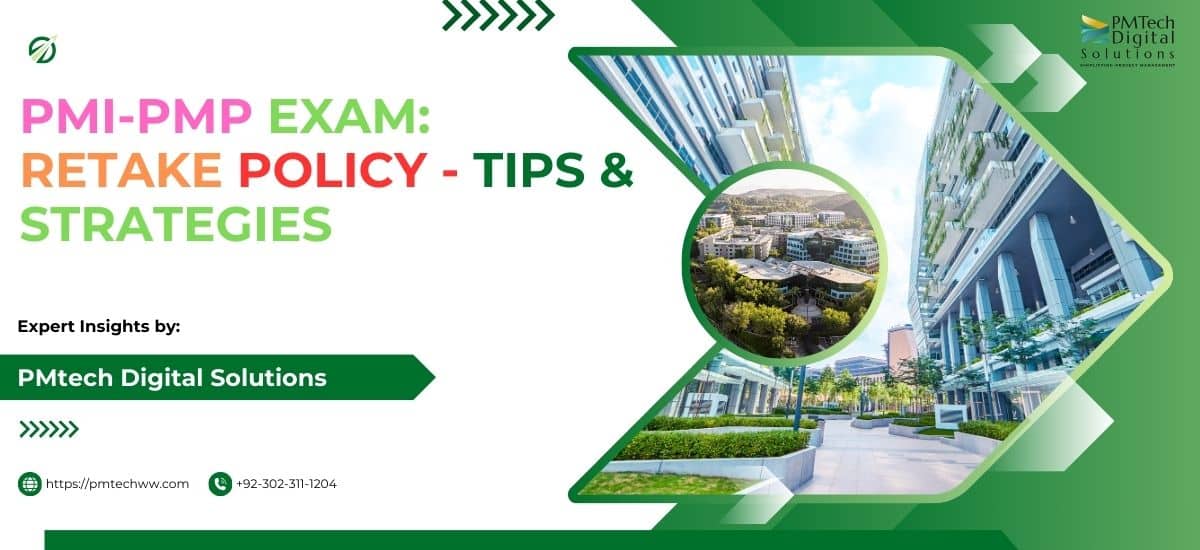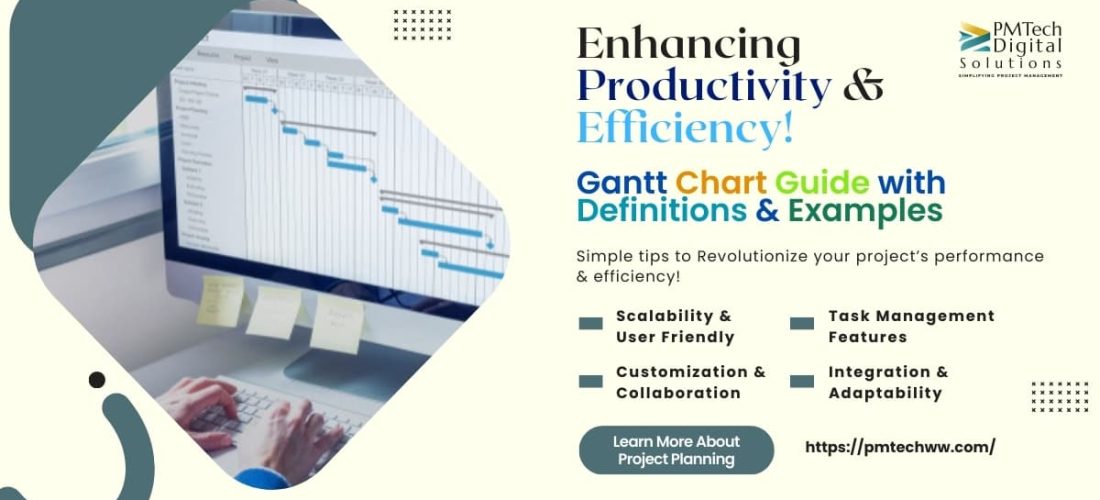Ever wondered how products travel from manufacturers to your doorstep? The answer is management in logistics & transport. It’s vital for companies to stay competitive and satisfy customers. Let’s explore this intricate world and its impact on our daily lives.
Management in Logistics & Transport oversees the flow of goods, services, and information from origin to consumption. It includes transportation, warehousing, inventory management, packaging, and customer service. By optimizing these processes, businesses can boost efficiency and cut costs.
As part of supply chain management, logistics ensures products reach customers on time and in good condition. It’s crucial for business owners and curious consumers alike to grasp these fundamentals.
Key Takeaways
- Logistics management involves coordinating the flow of goods, services, and information from the point of origin to the point of consumption.
- Effective logistics management is essential for businesses to remain competitive and meet customer demands.
- Logistics management encompasses activities such as transportation, warehousing, inventory management, packaging, and customer service.
- Optimizing logistics processes can help businesses streamline operations, reduce costs, and improve customer satisfaction.
- Understanding the fundamentals of logistics management is crucial for business owners and anyone interested in how products reach consumers.
Understanding the Basics of Logistics Management
Effective logistics management is vital for companies to stay competitive and meet customer demands. It involves planning, implementing, and controlling the efficient flow of goods and services. By optimizing logistics, businesses can boost customer satisfaction and reduce costs.
Logistics management ensures products are delivered to the right place at the right time. It requires understanding procurement, storage, transportation, and distribution. Coordinating these activities helps businesses streamline operations and achieve cost efficiency.
Definition and Importance of Logistics Management
Logistics management oversees the movement of goods from origin to consumption. It aims to meet customer needs while minimizing costs and maximizing efficiency. In today’s global economy, efficient supply chain management is crucial for competitiveness.
Effective logistics strategies can reduce lead times and improve inventory management. According to Project Management Tech, prioritizing logistics can significantly enhance operational efficiency and customer satisfaction.
Key Components of Logistics Management
Logistics management comprises several key components working together to ensure smooth flow of goods. These include procurement, storage, transportation, and distribution. Each component plays a critical role in the overall logistics process.
- Procurement: The process of sourcing and acquiring goods and materials from suppliers.
- Storage: The management of inventory and warehousing to ensure that goods are stored efficiently and securely.
- Transportation: The movement of goods from one location to another, including the selection of appropriate transportation modes and carriers.
- Distribution: The process of delivering goods to customers or end-users in a timely and efficient manner.
Effective procurement strategies help secure the best prices and quality for goods. Efficient transportation and distribution ensure timely product delivery to customers. Understanding these components helps businesses optimize their supply chains and improve performance.
Logistics management is not just about moving goods from point A to point B. It’s about optimizing the entire supply chain to deliver value to customers and drive business growth.
Businesses can invest in logistics management software or partner with third-party providers. These strategies leverage expertise and resources to enhance supply chain efficiency. Success depends on coordinating and integrating various logistics components effectively.
| Logistics Management Component | Role in Supply Chain |
|---|---|
| Procurement | Sourcing and acquiring goods and materials from suppliers |
| Storage | Managing inventory and warehousing to ensure efficient and secure storage |
| Transportation | Moving goods from one location to another, selecting appropriate transportation modes and carriers |
| Distribution | Delivering goods to customers or end-users in a timely and efficient manner |
A holistic approach to logistics management drives efficiency and reduces costs. It improves customer satisfaction by ensuring timely delivery of quality products. Businesses that master logistics gain a competitive edge in today’s fast-paced market.
The Logistics Management Process
Logistics management is vital for businesses moving goods. It covers planning, implementing, and monitoring the supply chain. Effective management optimizes operations, cuts costs, and boosts customer satisfaction.
Companies can streamline processes and improve efficiency through this approach. It involves the entire journey from raw materials to finished products.

Planning and Strategizing
Logistics planning is the first crucial step. It involves creating a strategy for moving goods from origin to consumption. The plan should outline transportation, storage, and distribution activities.
Effective planning requires understanding unique business needs. It includes identifying products, choosing transport methods, and setting storage requirements. A comprehensive budget for each aspect is essential.
“An efficient logistics management process can significantly reduce transportation costs and response times.” – Industry Expert
Implementation and Execution
Implementation follows planning. It involves coordinating goods movement and managing storage and distribution. This phase uses tools like transportation and warehouse management systems.
Success requires clear communication and well-defined roles. Careful execution of planned activities is crucial. Stakeholders must understand their responsibilities for smooth operations.
| Equipment | Maximum Load Capacity |
|---|---|
| 3-Wheel Forklift | 4,800 pounds |
| All-Terrain Forklift | 35,000 pounds |
Monitoring and Control
The final step involves monitoring goods movement. This ensures timely delivery and proper condition. It includes tracking transportation, storage, and distribution activities.
Effective systems provide real-time insights into the process. This enables quick decision-making and problem-solving. Maintaining efficiency and customer satisfaction is key.
- Regular warehouse inspections ensure compliance with rules and regulations, providing a hazard-free workplace for employees.
- Businesses should inspect their shipping containers at regular intervals to ensure safe delivery of cargo.
Careful management of logistics processes streamlines operations. It reduces costs and improves customer satisfaction. This approach can lead to higher profit margins.
Effective logistics integrates production and distribution seamlessly. It’s a powerful tool for businesses aiming to optimize their supply chain.
Types of Logistics Management
Logistics management plays a vital role in the supply chain. It ensures goods flow smoothly from suppliers to customers. Let’s explore different types of logistics management and their importance.

Inbound Logistics Management
Inbound logistics manages the flow of materials from suppliers to production facilities. It includes transportation, receiving, inventory control, and storage. This process ensures steady material supply while minimizing inventory costs.
Effective inbound logistics reduces lead times and improves inventory turnover. It also enhances overall operational efficiency. Companies can optimize their production lines by mastering this aspect.
Outbound Logistics Management
Outbound logistics focuses on moving finished goods to customers. It involves order processing, packaging, labeling, loading, and delivery. Efficient outbound logistics meets customer expectations and reduces shipping costs.
Companies can streamline operations using order management software (OMS) and warehouse management systems. These technologies help optimize delivery routes and improve customer satisfaction.
Reverse Logistics Management
Reverse logistics handles product returns, repairs, refurbishments, and disposal. It also manages customer refunds and exchanges. Effective reverse logistics minimizes waste and recovers value from returned products.
This process helps maintain customer satisfaction and improve sustainability. Companies can reduce costs and enhance their brand reputation through efficient reverse logistics.
Third-Party Logistics Management
Third-party logistics (3PL) involves outsourcing logistics operations to specialized providers. 3PL services include transportation, warehousing, inventory management, and order fulfillment. This allows companies to focus on their core competencies.
Partnering with a reliable 3PL provider offers several benefits. Companies can reduce costs, improve efficiency, and expand into new markets. This strategy eliminates the need for significant capital investments.
| Logistics Management Type | Key Activities | Benefits |
|---|---|---|
| Inbound Logistics | Transportation, receiving, inventory control, storage | Reduced lead times, improved inventory turnover, enhanced operational efficiency |
| Outbound Logistics | Order processing, packaging, labeling, loading, transportation, delivery | Meeting customer expectations, reducing shipping costs, improving customer satisfaction |
| Reverse Logistics | Product returns, repairs, refurbishments, disposal, customer refunds and exchanges | Minimizing waste, recovering value from returned products, maintaining customer satisfaction |
| Third-Party Logistics (3PL) | Outsourcing transportation, warehousing, inventory management, order fulfillment | Reducing costs, improving efficiency, expanding reach into new markets |
By effectively managing these different types of logistics, companies can optimize their supply chain operations, reduce costs, and improve customer satisfaction. The key to success lies in understanding the unique challenges and opportunities associated with each type of logistics management and implementing strategies that align with the company’s overall goals and objectives.
The logistics industry is constantly evolving. Companies must stay informed about the latest trends and technologies. Embracing innovation and adopting best practices can give businesses a competitive edge.
Essential Logistics Activities
Logistics management relies on several critical activities for an efficient supply chain. These include transportation management, warehousing, inventory management, and packaging. Optimizing these areas can reduce costs and boost customer satisfaction.
Transportation Management
Transportation management is crucial in logistics. It involves planning and optimizing goods movement from one place to another. This process includes carrier selection, rate negotiation, and route optimization.

Choosing the right carriers is vital for timely and efficient deliveries. Route optimization reduces costs and improves delivery speed. It identifies efficient routes and consolidates shipments when possible.
Warehousing and Storage
Warehousing involves safely storing materials and goods until needed. Effective management includes optimal layouts and proper inventory systems. It ensures proper handling and storage conditions to minimize damage.
Optimizing these processes can cut storage costs and improve order fulfillment times. Storing fast-moving items near packing areas enhances efficiency and speeds up order processing.
Inventory Management
Inventory management oversees ordering, storage, and use of materials and products. It tracks inventory levels, forecasts demand, and sets reorder points. This ensures the right products are available in correct quantities.
Effective management minimizes carrying costs and prevents stockouts. It improves cash flow by maintaining optimal inventory levels. Advanced systems like just-in-time inventory and ABC analysis can streamline processes.
| Inventory Management Technique | Description | Benefits |
|---|---|---|
| Just-in-Time (JIT) Inventory | A strategy that involves receiving goods only as they are needed, reducing inventory holding costs and improving cash flow | Minimizes inventory costs, reduces waste, and improves efficiency |
| ABC Analysis | A method of categorizing inventory based on its value and importance, allowing for targeted management strategies | Helps prioritize inventory management efforts, reduces carrying costs, and improves service levels |
| Economic Order Quantity (EOQ) | A model that determines the optimal order quantity to minimize total inventory costs, including holding and ordering costs | Minimizes inventory costs, reduces the risk of stockouts, and improves efficiency |
Packaging and Materials Handling
This area involves designing and selecting appropriate packaging and handling equipment. It protects goods during storage and transportation. Choosing the right materials depends on product characteristics and transportation requirements.
Effective solutions reduce product damage and improve efficiency. They enhance customer experience by ensuring products arrive intact. This maintains satisfaction and supports sustainability by minimizing waste and environmental impact.
The Role of Technology in Logistics Management

Technology has revolutionized logistics management, transforming how businesses handle their supply chains. Cutting-edge solutions streamline processes, enhance visibility, and leverage automation. These advancements drive efficiency and cost savings across the industry.
The logistics sector has evolved beyond manual, paper-based tracking systems. GPS tracking, automated warehouse management, and real-time inventory monitoring have reshaped goods transportation and storage. These innovations enable data-driven decisions, accurate demand forecasting, and optimal product availability.
According to recent projections, 95% of companies are expected to fall short of achieving end-to-end resilience in their supply chains by 2026, with siloes and gaps attributed to non-integrated tools and modes of operation.
To stay competitive, businesses must embrace digital transformation in logistics. Integrating AI, IoT, and big data analytics unlocks numerous benefits. These include enhanced supply chain visibility, improved efficiency, and proactive issue resolution.
- Enhanced supply chain visibility through real-time tracking and monitoring
- Improved efficiency and cost reduction through automation and intelligent route planning
- Proactive issue resolution and risk mitigation through predictive analytics
- Increased customer satisfaction through responsive and transparent services
| Technology | Benefits |
|---|---|
| Transportation Management Systems (TMS) | Analyzes freight forwarding options, optimizes route automation, and reduces shipment costs |
| Warehouse Management Systems (WMS) | Streamlines warehouse operations, improves inventory accuracy, and enhances order fulfillment |
| Electronic Data Interchange (EDI) | Facilitates secure document exchange, ensures data accuracy, and speeds up information flow |
| GPS Tracking | Enables real-time monitoring of shipments, eliminates the need for frequent status checks, and improves customer transparency |
Adopting these technologies and partnering with innovative providers gives businesses a competitive edge. It improves operational efficiency and delivers exceptional customer experiences. As logistics evolves, technology-focused companies will thrive in the dynamic world of supply chain management.
Challenges in Logistics Management and How to Overcome Them
Logistics organizations face numerous challenges that impact efficiency, profitability, and customer satisfaction. Rising costs and frequent supply chain disruptions demand innovative strategies. Let’s explore pressing challenges in logistics management and discuss effective solutions.

Managing Costs and Budgets
Controlling costs and managing budgets effectively is a major hurdle in logistics management. Transportation expenses, fluctuating fuel prices, and demands for faster deliveries strain budgets. Companies must optimize expenses without compromising quality or customer service.
Cost optimization strategies include using route optimization software to reduce fuel consumption and transit times. Collaborating with third-party logistics providers leverages expertise and economies of scale. Investing in fuel-efficient vehicles reduces operating costs and ensures regulatory compliance.
Ensuring Timely Deliveries
Customers expect timely deliveries in today’s fast-paced business world. Late or missed deliveries can lead to dissatisfaction and loss of business. Logistics managers must prioritize planning, carrier performance, and risk management to meet expectations.
Advanced transportation management systems optimize routes and track shipments in real-time. Establishing KPIs monitors carrier performance and identifies areas for improvement. Developing contingency plans mitigates the impact of unexpected delays or disruptions.
Handling Supply Chain Disruptions
Supply chain disruptions can devastate logistics operations, causing delays, stockouts, and increased costs. Natural disasters, geopolitical events, or supplier failures pose significant risks. Building resilience is crucial to minimize the impact of these disruptions.
Regular risk assessments help identify potential vulnerabilities in the supply chain. Robust business continuity plans outline steps for handling disruptions effectively. Diversifying the supplier base reduces dependency on a single source.
- Utilizing route optimization software to minimize fuel consumption and reduce transit times
- Collaborating with third-party logistics providers to leverage their expertise and economies of scale
- Investing in fuel-efficient and environmentally friendly vehicles to reduce operating costs and comply with regulations
- Regularly reviewing and adjusting budgets based on performance metrics and market trends
Ensuring Timely Deliveries
- Implementing advanced transportation management systems to optimize routes and track shipments in real-time
- Establishing key performance indicators (KPIs) to monitor carrier performance and identify areas for improvement
- Developing contingency plans to mitigate the impact of unexpected delays or disruptions
- Fostering strong relationships with reliable carriers and setting clear expectations for on-time delivery
Handling Supply Chain Disruptions
- Conduct regular risk assessments to identify potential vulnerabilities in the supply chain
- Develop robust business continuity plans that outline steps to be taken in the event of a disruption
- Diversify the supplier base to reduce dependency on a single source and mitigate the risk of supplier failure
- Invest in technology solutions that provide real-time visibility into the supply chain and enable quick decision-making
By implementing these strategies and continuously monitoring and adapting to the ever-changing landscape of logistics management, companies can overcome the challenges of managing costs, ensuring timely deliveries, and handling supply chain disruptions. With a proactive approach and a focus on resilience, logistics organizations can position themselves for long-term success in an increasingly competitive market.
Best Practices for Effective Logistics Management
Implementing best practices is crucial for a smooth logistics process. These practices should promote collaboration, communication, and continuous improvement. By focusing on these areas, companies can optimize their supply chain operations.

Collaboration and Communication
Logistics collaboration and supply chain communication are vital for seamless operations. Clear channels for information sharing among stakeholders are essential. This includes suppliers, carriers, warehouses, and customers.
Open communication can significantly improve morale and customer service. It impacts employee behavior and service process efficiencies. Transparency in transport logistics eases customer anxiety. Features like confirmation emails and tracking numbers are helpful.
Companies can use real-time data sharing platforms and joint planning sessions. Regular performance reviews are also beneficial. These practices enhance logistics management and yield better results. Learn more in The Ultimate Guide of Comprehensive Project Management.
Continuous Improvement and Optimization
Logistics optimization is crucial in the ever-changing logistics landscape. Regular process reviews help identify areas for improvement. These include reducing waste, eliminating bottlenecks, and streamlining operations.
Applying lean principles like value stream mapping drives systematic improvements. It optimizes the flow of goods and information. Technology solutions providing real-time data support data-driven decision-making.
Data collection and analytics tools offer insights for better supply chain management. Quick, informed decisions can save up to 40% on logistics costs.
On average, companies can potentially save between 20-58% on inbound freight spend by implementing best practices in logistics management.
To further optimize logistics processes, companies should focus on:
- Prioritizing warehouse management to prevent wasted products and lost revenue
- Implementing real-time inventory management tools to reduce the cost of maintaining inventory
- Developing efficient transportation strategies that focus on fast delivery, cost savings, and overall efficiency
- Regularly conducting employee training workshops to keep staff updated with the latest trends and technologies in the logistics industry
Embracing process improvement helps companies stay ahead of the curve. It allows them to deliver exceptional value to their customers. Continuous optimization of logistics operations is key to success.
Measuring and Improving Logistics Performance
Measuring and improving logistics performance is crucial for competitiveness and customer satisfaction. Tracking key performance indicators (KPIs) and analyzing data help identify areas for improvement. This approach enables data-driven decisions to optimize operations effectively.
Key Performance Indicators (KPIs) in Logistics
Establishing KPIs aligned with business goals is essential for measuring logistics performance. Critical logistics KPIs include on-time delivery rate, order accuracy, inventory turnover, transportation costs, and warehouse capacity utilization.
Setting targets for each KPI and monitoring performance against them reveals strengths and weaknesses. Benchmarking against industry standards provides insights into competitiveness and highlights improvement opportunities.
- On-time delivery rate
- Order accuracy
- Inventory turnover
- Transportation costs
- Warehouse capacity utilization
Analyzing and Reporting Logistics Data
Collecting and analyzing relevant data is crucial after establishing logistics KPIs. This process involves integrating data from various systems, including transportation, warehouse, and inventory management. Combining these sources provides a comprehensive view of logistics performance.
Data visualization tools like dashboards and scorecards make information actionable. These tools present complex data clearly, enabling managers to identify trends and make informed decisions. Regular reporting fosters accountability and continuous improvement as teams address performance gaps.
| KPI | Target | Current Performance |
|---|---|---|
| On-time delivery rate | 95% | 92% |
| Order accuracy | 99.5% | 99.2% |
| Inventory turnover | 8.0 | 7.5 |
| Transportation costs as % of sales | 5% | 6% |
| Warehouse capacity utilization | 85% | 90% |
“You can’t manage what you don’t measure. And what gets measured gets done.” – Peter Drucker
A data-driven approach to logistics management ensures optimized operations. Continuous monitoring and improvement are key to success in today’s competitive marketplace. This strategy helps businesses stay ahead and meet evolving customer demands effectively.
The Future of Logistics Management
Logistics is undergoing a major shift due to new technologies and changing consumer needs. Efficiency and sustainability are driving this transformation. Staying informed about trends is vital for success in this evolving industry.
Emerging Trends and Technologies
Key trends are reshaping logistics management. These include e-commerce growth, sustainability focus, automation rise, and IoT adoption. Real-time data and supply chain visibility are also in high demand.
- The growth of e-commerce and omnichannel distribution
- Increasing focus on sustainability and green logistics practices
- The rise of automation and autonomous vehicles
- The adoption of Internet of Things (IoT) and blockchain technologies
- The demand for real-time data and supply chain visibility
IoT sensors enable real-time tracking of goods throughout the supply chain. Blockchain provides greater transparency and security in logistics transactions. These technologies are revolutionizing operations.
Automation and robotics are streamlining operations and cutting costs. Autonomous vehicles and warehouse robots play a crucial role. Advanced analytics and AI enable more accurate demand forecasting and network optimization.
Preparing for Industry Developments
Companies must be proactive to stay competitive in the evolving logistics landscape. This means investing in innovation and developing team skills. Focusing on talent development is crucial.
Training programs in data analytics, automation, and supply chain management are essential. Fostering a culture of continuous learning and innovation helps stay ahead of the curve.
| Skill Area | Importance | Training Options |
|---|---|---|
| Data Analytics | High | Online courses, in-house training |
| Automation | Medium | Vendor-provided training, workshops |
| Supply Chain Management | High | Professional certifications, graduate programs |
Effective change management is critical for implementing new technologies and processes. Clear communication with stakeholders is key. Pilot testing new solutions and focusing on continuous improvement are crucial.
By staying up-to-date with the latest logistics trends and investing in our people and capabilities, we can position ourselves for success in the dynamic and exciting future of logistics management.
Building strong relationships with logistics partners provides valuable insights into industry developments. It also grants access to the latest innovations and best practices. These partnerships are crucial for success.
The future belongs to those who embrace change and invest in innovation. Adapting to evolving customer needs is key. By focusing on these priorities, companies can thrive in the years ahead.
Management in Logistics and Transport
Effective management is vital in logistics and transport. It ensures smooth goods and services flow. By coordinating activities, businesses can optimize supply chain efficiency. This gives them a competitive edge in the market.
Coordinating Logistics and Transportation Activities
Logistics coordination and transportation planning are intertwined. Managers must align transport plans with inventory, production, and customer needs. This requires collaboration between logistics, transportation, sales, marketing, and finance departments. All activities must sync with overall business goals.
Technology has transformed logistics and transport management. Tools like transportation management systems (TMS) optimize routes and track shipments. They enable data-driven decisions, boosting productivity and customer satisfaction. The global TMS market is set to reach $17.8 billion by 2025.
“Transportation managers using TMS software can optimize routes for drivers, ensuring the most efficient deliveries possible, thus enhancing productivity and customer satisfaction.”
Optimizing Supply Chain Efficiency
Optimizing supply chain efficiency is key in logistics and transport management. Managers must view the entire supply chain holistically. This approach helps identify improvement opportunities at every stage. Strategies include reducing lead times and minimizing inventory levels.
- Reducing lead times
- Minimizing inventory levels
- Consolidating shipments
- Leveraging technology to automate processes and gain real-time visibility
Continuous improvement methods like Six Sigma and Lean drive efficiency gains. Collaboration with supply chain partners is crucial. It helps identify and implement improvements benefiting the entire chain.
| Aspect | Transportation Management | Logistics |
|---|---|---|
| Focus | Physical movement of goods | Broader scope of activities in the flow of goods and services |
| Activities | Route planning, carrier selection, shipment tracking, freight cost optimization | Demand forecasting, inventory management, warehousing, order fulfillment, distribution |
| Benefits | Timely delivery of goods, cost savings, improved inventory management, enhanced visibility, effective risk management | Efficient resource allocation, enhanced customer satisfaction, optimal inventory management, streamlined operations, effective risk management |
Effective logistics and transport management streamlines operations and cuts costs. It also boosts customer satisfaction. With the right strategies and technologies, companies can navigate supply chain complexities. This approach leads to long-term success in today’s competitive market.
Conclusion
Logistics management is vital for business success across industries. It optimizes operations, reducing costs and improving delivery times. This enhances customer satisfaction by streamlining supply chain processes, from transportation to inventory management.
To gain a competitive advantage, businesses must adopt advanced technologies in logistics. Implementing sophisticated inventory systems and real-time tracking leads to better demand forecasting. Our ultimate guide to conducting a SWOT analysis can help develop effective optimization strategies.
Excellence in logistics management requires continuous improvement. Regular data analysis and stakeholder collaboration help businesses adapt to market changes. Investing in talent development is crucial for staying current with industry trends.
Mastering logistics management drives business growth and profitability. Companies can optimize supply chain operations by using the right strategies and technologies. Embracing innovation is key to thriving in the dynamic world of logistics management.
FAQ
What is logistics management?
Logistics management oversees the efficient flow of goods, services, and information. It spans from origin to consumption, meeting customer needs. This process involves planning, implementing, and controlling various aspects of the supply chain.
What are the key components of logistics management?
Logistics management encompasses several crucial components. These include procurement, storage, transportation, distribution, and customer service management. Together, they ensure a smooth flow of goods from suppliers to end customers.
Why is logistics management important for businesses?
Effective logistics management is vital for business success. It helps companies stay competitive and reduce costs. It also improves customer satisfaction and optimizes supply chain efficiency. Proper management ensures timely delivery of products at the lowest possible cost.
What are the main types of logistics management?
Logistics management includes several key types. Inbound logistics deals with raw material procurement. Outbound logistics focuses on finished goods distribution. Reverse logistics handles product returns. Third-party logistics (3PL) involves outsourced services.
What role does technology play in modern logistics management?
Technology is crucial in streamlining logistics processes and improving efficiency. It provides real-time visibility into supply chain operations. Key technologies include transportation and warehouse management systems. Automation solutions like robotics and AI also play significant roles.
How can companies overcome challenges in logistics management, such as managing costs and ensuring timely deliveries?
Companies can implement cost-saving strategies like route optimization and shipment consolidation. Developing robust logistics planning processes is essential. Monitoring carrier performance using KPIs helps maintain quality. Investing in technology solutions enables quick decision-making and real-time visibility.
What are some best practices for effective collaboration and communication in logistics management?
Establishing clear communication channels is crucial for effective logistics management. Timely sharing of relevant information fosters transparency and trust. Using collaboration tools like real-time data sharing platforms enhances efficiency. Joint planning sessions help align goals and drive continuous improvement.
How can companies measure and improve their logistics performance?
Companies can track key performance indicators (KPIs) to measure logistics performance. These include on-time delivery rate, order accuracy, and inventory turnover. Regular benchmarking and data analysis help identify areas for improvement. This approach supports data-driven decision-making in logistics operations.
What are some emerging trends and technologies shaping the future of logistics management?
E-commerce growth and sustainability are key trends in logistics management. Omnichannel distribution strategies are gaining importance. Technologies like IoT, blockchain, and autonomous vehicles are transforming operations. These advancements enable greater transparency, efficiency, and automation in logistics.
How can companies optimize their supply chain efficiency through effective logistics and transport management?
Companies should take a holistic view of their end-to-end supply chain. Aligning transportation plans with inventory levels and production schedules is crucial. Leveraging technology for real-time visibility enhances decision-making. Collaborating with partners helps identify and implement network-wide improvements.

















17 Responses
Can you be more specific about the content of your article? After reading it, I still have some doubts. Hope you can help me.
Thank you for your sharing. I am worried that I lack creative ideas. It is your article that makes me full of hope. Thank you. But, I have a question, can you help me?
Your point of view caught my eye and was very interesting. Thanks. I have a question for you.
Your article helped me a lot, is there any more related content? Thanks!
Your point of view caught my eye and was very interesting. Thanks. I have a question for you.
Thanks for sharing. I read many of your blog posts, cool, your blog is very good.
This means users can confidently pursue their fitness goals without the concern of experiencing any antagonistic well being
issues. It is superb how do anabolic steroids build muscle (Maddison) quickly individuals could
reach their fitness targets with the usage of the dietary supplement D-Bal Max, which is the equal of steroids when it
comes to effectiveness. It is a pure supplement made
to assist customers gain strength and muscular development quickly.
You could more simply meet your fitness objectives by utilizing
D-Bal Max, which is a reliable and trusted method to increase endurance,
focus, and different performance-enhancing attributes.
With the help of the rich vitamins on this supplement, you might even see outcomes sooner and look better in swimwear.
These nutrients additionally increase the effectiveness of your workouts
and speed up muscle toning. The complement closest to steroids that is
extremely rated by customers is a complement that mimics
the consequences of steroids with out the dangerous side effects.
Consequently, we see customers hold all of their
gains from legal steroids, versus those who often lose dimension after taking anabolic steroids (due to the physique shifting right into a catabolic state post-cycle).
We have seen individuals reply very properly to authorized steroids or
steroid alternatives, by which case they do
experience steroid-like results. Clenbutrol is one disngned to provide efficient assist throughout
chopping cycles and is one of the prime authorized steroids that basically works to support muscle acquire and weight reduction for a ripped physique.
Look for these certifications in the merchandise you buy to guarantee their security and high quality following consumption. In the medical area, even in complement use, an evidence-based approach is the primary determinant of high quality and assurance of a product’s
presumed outcomes. Nonetheless, it does not necessarily imply that you should rely
on supplements and other synthetic means to hurry up the development process.
The mission of Health Vitamin is to supply the globe one of the best wealthy in nutrients diet at an reasonably priced cost.
A company that creates many dietary supplements with a concentrate on bodily hormonal imbalances.
Dr. O’Connor has over 20 years of experience treating women and men with
a history of anabolic steroid, SARM, and PED use.
We evaluated the value of each authorized steroid alternative to ensure it offers worth for money.
We favored merchandise that are competitively priced with out compromising on high quality.
Clenbutrol is a authorized different to Clenbuterol,
a steroid utilized by bodybuilders and athletes of their slicing section to burn fats and
achieve a lean physique. He carefully examined studies
that compared the efficacy of a Chinese Language herbal compound designated ASHMI, or anti-asthma herbal medical intervention, with that of
prednisone in treating asthma 1. ASHMI is made up of gang-cao, or radix glycyrrhizae; ku-shen,
or radix sophorae flavescentis; and ling-zhi, or ganoderma.
When used consistently with regular exercise and
a nutritious diet, these legal steroids provide efficient bennefits that result in impressive results.
We assessed the popularity of every producer to make sure they have a historical past of manufacturing high-quality supplements.
This complement is among the top-rated legal steroids in the marketplace, and it works by boosting the
body’s pure manufacturing of growth hormone.
Sure, women are also able to reap the advantages of legal steroids
to build muscle and enhance athletic efficiency.
However, it is important to determine on a product that is formulated specifically for
girls, as some dietary supplements could contain elements
that aren’t suitable for girls. Sure, authorized steroids are formulated to work
by stimulating the body’s pure manufacturing of hormones
which are answerable for muscle growth, power, and endurance.
As the name says, it’s also a nice product for rising human progress hormone (HGH) and insulin-like development issue
(IGF-1). As the name says, it is also an excellent product for increasing Human Development Hormone (HGH).
In addition to L-arginine, which stimulates pure HGH production,(10)
HGH-X2 additionally contains maca root, Mucuna pruriens extract, and
hawthorn berry extract. These herbs have a broad range of optimistic
health effects, especially as a result of increased nitric oxide manufacturing.
D-Bal has been hailed as one of the strongest authorized steroid alternatives for muscle growth in 2025.
SARM authorized dietary supplements do the same thing, besides
that it does so with the help of natural elements.
The Beast Stack includes ten (10) dietary supplements formulated to fit a 2-cycle process of muscle development,
strength improvement, performance enhancement, fat-burning, and
restoration. I have been taking D-Bal MAX and have seen substantial improvements in my strength and vitality levels.
Along with gaining muscle mass, I even have been in a place
to maintain my power and power levels even throughout intense coaching periods.
I am extremely glad with the outcomes and suggest D-Bal MAX to anybody looking for a safe and effective approach to build muscle and
improve energy.
Though build lean muscle mass, they trigger unwanted facet effects
such as liver injury, cardiovascular toxicity, increased hostility and hair loss.
That is why it is a lot safer to use a natural different
to anabolic steroids to create natural protein synthesis and
muscle development. The components of those legal steroid alternatives generally include varied plant extracts,
amino acids, and different pure elements that have undergone medical testing.
Awesome! Its genuinely remarkable post, I have got much clear idea regarding from this post
I’m often to blogging and i really appreciate your content. The article has actually peaks my interest. I’m going to bookmark your web site and maintain checking for brand spanking new information.
Good post! We will be linking to this particularly great post on our site. Keep up the great writing
Great information shared.. really enjoyed reading this post thank you author for sharing this post .. appreciated
You’re so awesome! I don’t believe I have read a single thing like that before. So great to find someone with some original thoughts on this topic. Really.. thank you for starting this up. This website is something that is needed on the internet, someone with a little originality!
Professional excellence delivered, skilled professional execution. Skilled execution excellence. Expert excellence.
Thank you for your sharing. I am worried that I lack creative ideas. It is your article that makes me full of hope. Thank you. But, I have a question, can you help me?
Thank you for your sharing. I am worried that I lack creative ideas. It is your article that makes me full of hope. Thank you. But, I have a question, can you help me?
Can you be more specific about the content of your article? After reading it, I still have some doubts. Hope you can help me.
Your point of view caught my eye and was very interesting. Thanks. I have a question for you.